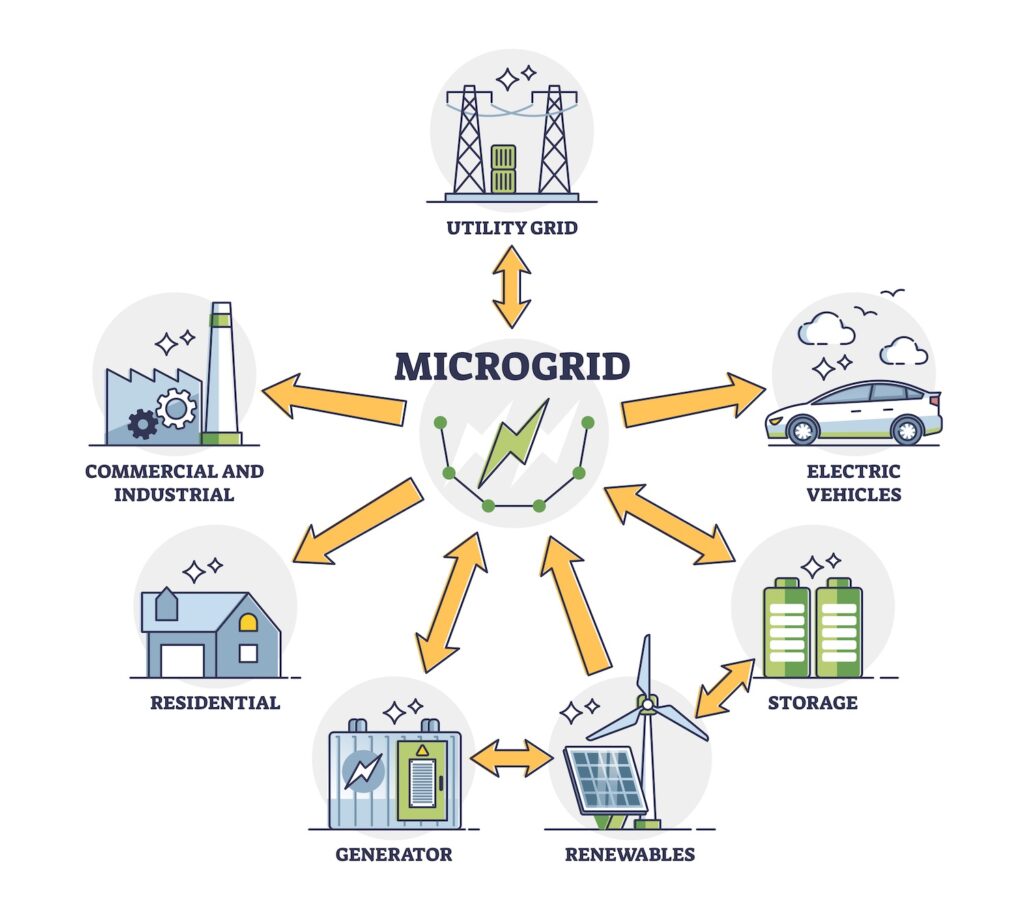
Microgrids can be used anywhere from private homes with solar panels to remote communities that may not have access to the main grid.
Microgrids can be implemented in a variety of settings, a great example is on small islands where it may be impossible to connect with a main power grid.
Although many populated islands may already have a microgrid in the form of traditional generator power, adding renewable energy technology is now providing greater options for these communities.
Aotea Great Barrier Island, located 100 kilometres off the coast of Auckland is the perfect example. Aotea has a particularly high rate of private solar panels supported by battery storage, and electric vehicles can recharge at public charging stations.
In the past, island communities have had to depend on petrol- or diesel-powered generators as their microgrid system.
This is a reliable and controllable method for producing power requirements, but now renewables are being added to the microgrid system.
Generally, islands enjoy plenty of sunshine and wind, which means they are now able to construct a composite microgrid using all three methods of power generation.
Challenges exist, in that energy from wind turbines relies on the existence of wind, and solar energy relies on unobstructed sunshine, hence generator backup is required, and all of this requires complex management to ensure power supply appropriately meets demand.
However, island communities can reduce their running costs by running fewer generators. By using all three methods of energy generation, reliability is increased, quality of service is improved, and outages are reduced.
Likewise, remote areas in New Zealand benefit from a microgrid, which gives them energy independence.
Distance presents problems in supplying energy from the main grid due to costly infrastructure and technical challenges, so a microgrid system provides the solution.
DEUTZ New Zealand is currently in the process of designing a cutting-edge microgrid system that is suitable for New Zealand’s unique weather condition and environment.
The system integrates solar panels to generate energy and a battery storage platform for storing the produced energy.
The platform is designed to be adaptable, available in both low voltage and high voltage setups, and can be expanded to handle greater capacities.
To guarantee a constant power supply around the clock, the system is backed up by a DEUTZ diesel generator. The battery storage system and genset canopies are constructed from galvanised sheet metal with a powder coated finish to provide durability and withstand exposure to the elements.
New Zealand is still in the early stages of microgrid utilisation but is committed to implementing and supporting the growth of renewable energies. The geographic nature of the country — the fact that it is long, and most electricity is produced in the south — means that transmission costs are high.
Using microgrids in island and remote communities comes with challenges due to the unique characteristics and energy needs of each location, however, these challenges are being addressed and microgrid implementation here will improve energy reliability and sustainability into the future.

